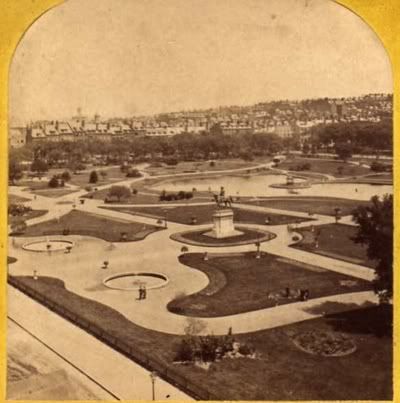I really think we need to better frame this discussion, in the context of our common interests: good design executed to the betterment of public urban spaces.
I agree that it's difficult to determine how successful any park will be before it's "done," but there's a lot that could be determined by studying what's proposed, considering issues like climate, and the physical conditions at and beyond the site, and taking steps to draw in partners (developers, property owners & managers, and cultural organizations) who can work together to design, execute, and program a shared civic vision.
Quite simply, this is far removed from the reality of the process that has resulted in the ill-conceived nonsense that we have today. The Turnpike Authority, the Mayor and his cabal, and local pols wanting to curry favor with the disparate factions that they represent, formed a circular firing-squad, and took aim at an historic development opportunity; take a stroll through the results of their volley and tell me if you find one aspect of it that is any better than half-assed. If you believe that a mule is a horse built by committee, I can show you some grass in Downtown Boston that needs to be fertilized.
Some questions that could have been posed during the process:
When it became apparent that MassHort wasn't in a position to develop their site (a person with a casual knowledge of non-profit finance could have figured this out several years ago, an audit would have at the time the site was awarded), why wasn't the parcel pulled and assigned to another developer? How about a requirement for financing (or a reality based plan) before the parcels are assigned to any developer, commercial or non-profit.
Were public/private or commercial/non-profit partnerships considered to build on the ramp-sites along the Greenway? Consider that these sites present the greatest engineering challenges and, therefor, highest costs to develop. All have been offered up to non-profits, only one of which is well established (the Y). Does anyone really believe that Safdie's absurd Viking ship is ever going to be built? The Y can only afford to put a few weight benches under a tent and call it a day. The New Center has the money and the will to get its project done; a shame they didn't hire a better architect.
My criticism of the Greenway has always been in the context of demanding better for my tax dollar. Better design, better maintenance, better connection from Downtown to the waterfront.
In a way, the Greenway isn't even better than what it replaced -- the highway could shelter you from the rain.


